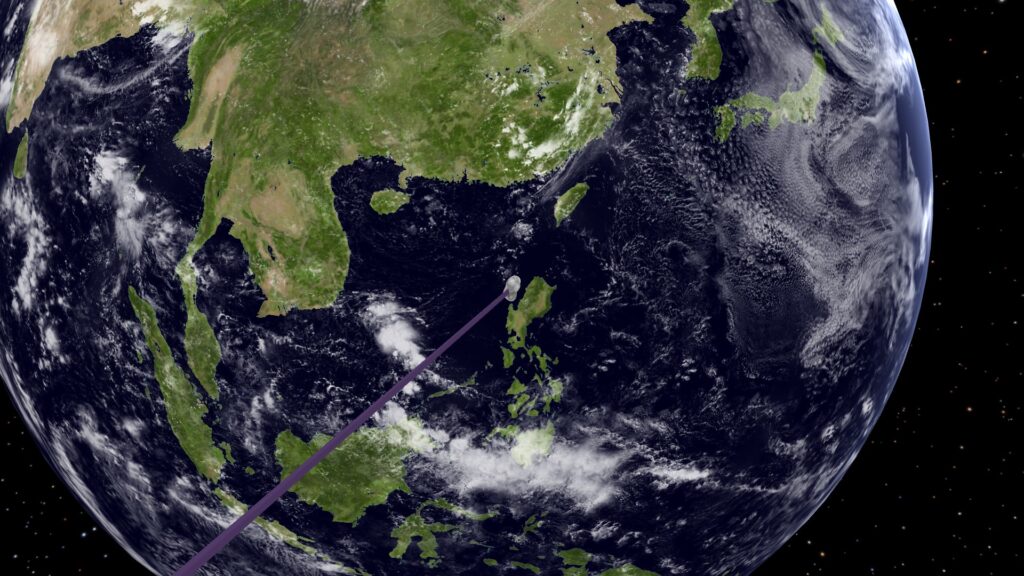In this video you will learn about one of the Trojan asteroids of Jupiter. This asteroid is called Hektor. It is the largest of the Trojan asteroids, but not the first in the line of discovery. The first Trojan asteroid discovered was Achilles. This happened in 1906. The Hektor, discovered in 1907, has an elongated shape with dimensions of 370 × 195 × 205 km. Hektor is not a satellite of Jupiter. It orbits the Sun, and its orbit is very close to circular. At the same time, it is inclined by 18 degrees to the plane of the Solar system.
There are two groups of Trojan asteroids of Jupiter. The asteroids of these groups are located at the L4 and L5 Lagrange points of the Sun–Jupiter system. The L4 Lagrange point is in Jupiter’s orbit 60 degrees ahead of it. The Sun, Jupiter and the Lagrange point L4 are located at the vertices of an equilateral triangle. The peculiarity of the Lagrangian point is that a third body with a low mass can be relatively stable in it. Another Lagrange point L5 is also in Jupiter’s orbit, but 60 degrees behind it. Hektor, Agamemnon, Achilles and other representatives of the Trojan asteroid group called the “Greek camp” are located at the Lagrange point L4. At another point in L5 there are Patroclus, Mentor, Paris and other asteroids of the group called “Trojan camp”. More than six thousand Trojan asteroids of Jupiter are already known. Moreover, there are almost twice as many Greeks in L4 as there are Trojans in L5.
When it is said that an asteroid is located at the Lagrangian point, it does not mean that it is fixed at this point. This means that the asteroid is oscillating relative to this point. The oscillation amplitude of the asteroid Hektor relative to the Lagrangian point exceeds 300 million km. If we consider the trajectory of the asteroid Hektor relative to Jupiter, it can be seen that the asteroid is approaching the giant planet, then moving away from it. In this case, the plane of the trajectory also oscillates. As for the Lagrange point L4 of Jupiter, the asteroid draws a particularly bizarre line in the process of its oscillations. The trajectories are clearly shown in this video.
Currently, the Lucy spacecraft is moving towards the L4 Lagrange point, which will reach it in 2027. “Lucy” will explore several asteroids of Jupiter’s L4 point. Then it will perform a gravitational maneuver near the Earth, after which it will go to the L5 point of Jupiter, which it will reach by 2033.
Modeling and rendering were performed by author of this publication using own software. The calculations took into account the mutual influence of the Sun, all the planets of the Solar System, the Moon and the asteroid on each other. Relativistic effects were also taken into account in the calculation.
The track Arena 17 back from the death row by Koi-discovery sounds in this video. This track was not changed. CC0 1.0 Universal (CC0 1.0 DEED) license.





